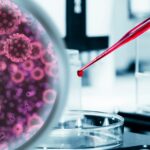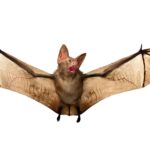The drive to find a bad guy to blame for the pandemic is also behind the idea, says Professor Peter Doherty.
Australian Nobel Laureate Professor Peter Doherty has criticised proponents of the “lab leak” hypothesis on the origins of SARS-CoV-2, saying all the evidence points to the virus crossing into humans from animals, probably bats.
Professor Doherty is one of an international team of experts who authored a recent review of the evidence on covid’s origins.
The paper, which was published on the non-peer-reviewed preprint server Zenodo, examined the existing evidence on when, where and how the virus emerged in humans.
SARS-CoV-2 is the seventh coronavirus to infect humans in the past 20 years alone. The authors pointed out that all previous human coronaviruses had zoonotic origins, and this one bore all the hallmarks as previous coronaviruses.
Professor Doherty said the continued pushing of the suggestion that the virus was engineered and either released or escape from a laboratory in Wuhan was “people demonising science”, and part of the anti-science movement.
“The Wuhan lab operates at best practice,” he told The Medical Republic.
While the source of SARS-CoV-2 was yet to be identified, Doherty said, he believed the most likely animal origin was bats.
Serological surveys of residents in Yunnan province living close to bat caves – which were done after the first SARS-CoV outbreaks – found around 3% of those in the area tested positive for SARS-CoV antibodies.
However, a direct link was yet to be established between bats and the first diagnosed cases from the Huanan market in Wuhan, which were largely concentrated in the area of the market where live animals were traded.
The bat virus with the greatest average genetic similarity to SARS-CoV-2 was the Rhinolophus bat virus RaTG13. However, there were three other bat viruses that share a more recent common ancestor with SARS-CoV-2. Significantly, none of these viruses were being collected by the Wuhan Institute of Virology, which proponents of the lab-leak theory point to as the hypothetical source of the virus.
The paper’s authors also addressed speculation that the virus was engineered to bind to the human ACE2 receptor by highlighting that the virus had undergone numerous mutations to its receptor binding gene of the spike protein during the pandemic, enhancing its transmissibility. Pangolin-derived SARS-CoV-related viruses also showed similar structures of spike protein to SARS-CoV-2.
“Combined, these findings show that no specific human ‘pre’ adaptation was required for the emergence or early spread of SARS-CoV-2, and the claim that the virus was already highly adapted to the human host, or somehow optimised for binding to human ACE2, is without validity,” they wrote.
Pathogens had escaped from laboratories in the past, Doherty said; however, none of these had ever led to an epidemic or pandemic. He also highlighted that infection control protocols in laboratories such as those at the Wuhan Institute of Virology were incredibly rigorous.
He suggested the search for a laboratory origin came from some needing for there to be a “bad guy” in the pandemic. “We can’t blame nature because that’s out of our control.”




